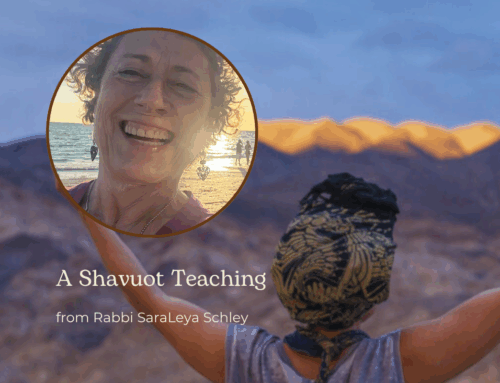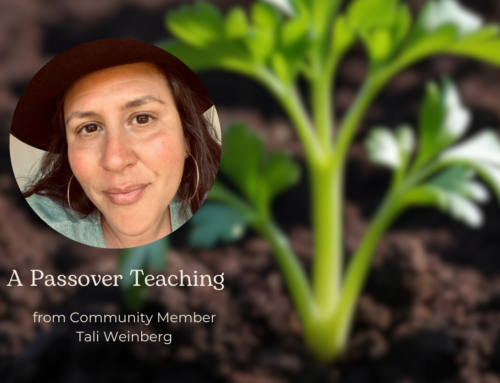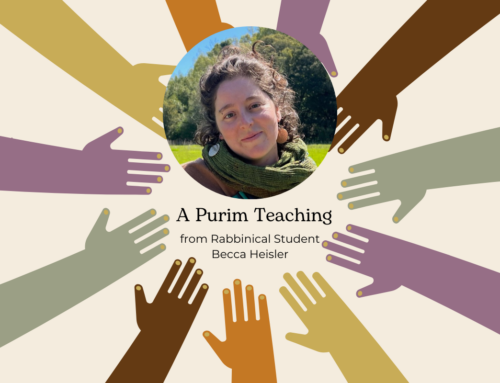Celebrating Our Tallest Teachers: New Buds, Running of the Sap, Songs of Freedom
A Teaching for Tu B’Shvat | 13 Sh’vat 5777 | Feburary 9, 2017
By Maggid Zelig Golden
We celebrate Tu B’Shvat, the birthday of the trees, this weekend! Tu B’Shvat orients us to the mysterious awakening at this season in the Hebrew calendar. Tu B’Shvat also honors the wisdom of the trees. Trees have long held an esteemed place in Jewish tradition. The Torah is called Etz Chaim, a Tree of Life. Etz, “tree,” is similar to the “advise.” In the Talmud we learn that Rabbi Yohanan ben Zakai, one of Rabbi Hillel the elder’s great students, was proficient in the art of “speaking with trees” as well as other aspects of nature. (Bavli Bava Batra 134a) A midrash reinforces this understanding: “All trees converse with one another; all trees converse with humankind. All trees were created for human companionship.” (Breishit Rabbah 13:2) So each year, we gather to honor the trees.
Tu B’Shvat coincides with parsha Be’shallah, where Israel claims its freedom from Egypt in its journey through the parted Red Sea. In an amazing midrash (Exodus Rabbah 21:10), we are offered a vision of this splitting of the sea as one with fruit trees blossoming and birds perched upon the trees singing songs of freedom in celebration of our liberation. In the minds of our sages, Tu B’Shvat — one of the four Jewish new years (Babylonian Talmud, Rosh Hoshana 2a) — is a powerful reminder of our liberation. And perhaps more importantly, the tall, tall trees — this day’s honorees — are powerful teachers that can advise us on our journey to freedom.
This time of year, when the sap begins to rise in the trees again, is the energetic gateway between the freeze of winter and the blossoming of spring. At dawn, that magical transition between night and day, darkness lightens into color and the air waits for its perfect stillness to be broken by the first bird song. Tu B’Shvat is this liminal moment in the Hebrew calendar. It marks the transition from the unseen to the seen, from the frozen to the flowing, from sleeping to awakening — Tu B’Shvat marks the mysterious beginnings of rebirth and growth.
Once a Talmudic tax-day to determine the fruit tree-tithing schedule on the 15th of the month of Shvat (in Hebrew Tu B’Shvat), the Tzfat mystics of the 16th century evolved our understanding and celebration of the budding trees. For them, it was an important opportunity to honor the mystery of the four seasons with four cups of wine and the four elements with different types of fruits. But most importantly it was a time to honor the trees and the natural world.
For the Hebrew mystics and holy people of traditions from around the world, the tree is seen as a major gateway to G-d: “She
[Torah] is a tree of life for those who hold fast to her.” (Proverbs 3:18) At Tu B’Shvat we celebrate the many branched pathways that climb toward the heavens and lead us to spirit. We marvel at the brilliant awakenings of the nascent beauty in first buds that we know will become flowers and eventually fruits. And we remember the roots that sink deep into the earth — ancestral pathways that draw from her depths all that nourishes and sustains us, and that which stabilizes us during the toughest storms.
On Tu B’Shvat we remember that the trees are our teachers. The Torah teaches, “a person is like a tree of the field,” (Deut. 20:19) and as the Chasidic Rabbi Shlomo of Chortkov writes, “a person should learn how to pursue his spiritual life from the tree.” Like Avram, who encounters his “teacher oak tree” (Alon Moreh, Gen. 12:6) immediately upon leaving his father’s home, we can receive profound understanding and guidance if we tune into the trees.
Join us this Sunday for Tu B’Shvat in the Redwoods! I wish for us all to deepen our relationship with our great teachers. Let them remind us of our own deep roots. Let them teach us how to tend our tender new shoots and how to tune into the deeper awakenings within ourselves. Happy Tu B’Shvat!





